Risk Profile Graph Of Options
Options Investing Hub ⮞ Options Basics ⮞ Risk Profile Graph Of Options
6 RESOURCES
⮞ Introduction To Options
⮞ The "Blackhole" Of Options Strategies
⮞ The 2 Core Option Strategies For Investors
⮞ Time Decay Of An Option
⮞ What Determines Option Pricing
⮞ Risk Profile Graph Of Option
Risk Profile Graph Of Option

We have gone through quite a bit on option pricing and the fundamentals of options.
Now, it is about something more exciting which concerns the potential profits and loss that we can make.
Its important to first understand that the definition of risk.
Risk is the maximum amount that we will actually lose on our trades.
Most people make the mistake on only projecting how much potential profit they can make - instead of focusing on the potential risk.
Risk Profile
The idea of the risk profile is to show you what is the potential loss with respect to the share price of the underlying asset.
Let's start with something simple - buying stocks.
So if we take a look at a risk profile of buying stocks. This is how the risk profile looks like.
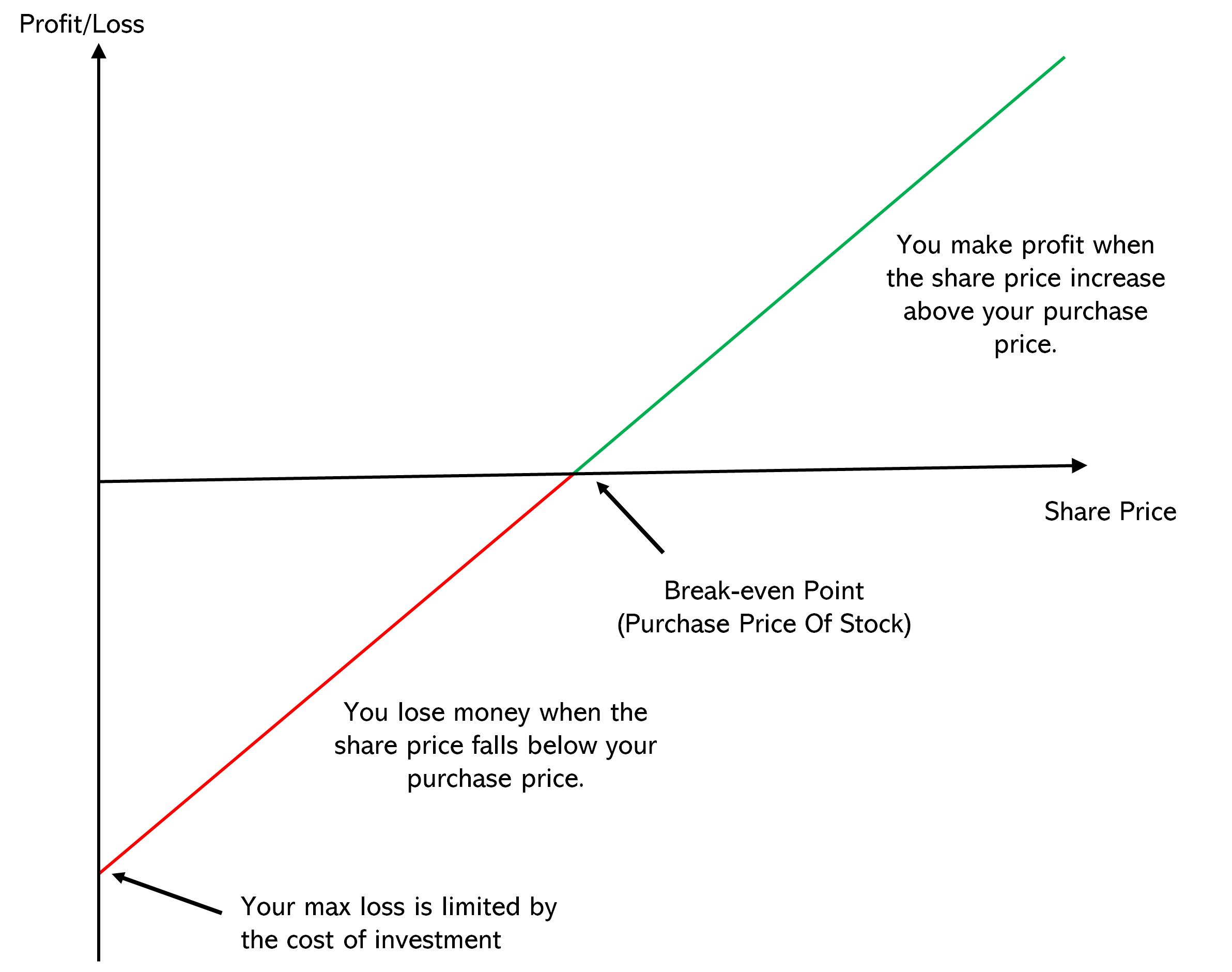
Simple and straightforward right?
So let's say if I bought 100 shares of Facebook @ $150 - this means a total investment of $15,000.
If Facebook goes above $150 - I will make money (see green line)
If Facebook falls below $150 - I will lose money (see red line)
However, what is the maximum I will ever lose?
Well, it will be $15,000. I cannot lose more than that amount because that is my maximum risk.
Now that you understand what is a risk profile graph, let's take a look at how the risk profile of our two core strategies look like.
Risk Profile Of Long Call
Remember that when we buy a call option - we have to pay an option premium.
So for example, in this following trade:
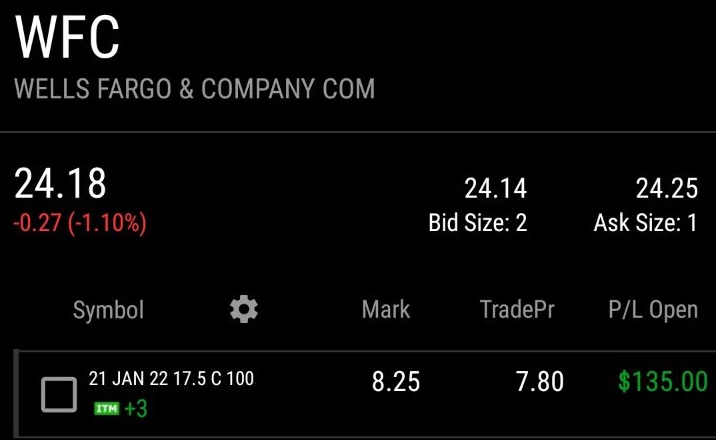
I want you to break down the meaning of this trade.
Notice 21 Jan 22 17.5C 100.
- Date of expiration: 21 Jan 22
- Strike Price: 17.5
- Option: Call Option
- 100 means 100 shares
The trade price of $7.80 is the option premium that I paid for per option.
And since one option is a 100 shares - this means I paid a total of $780 per call option contract.
With a total of 3 contracts - what is my maximum risk?
Well, it would be $2,340.
So this is how the risk profile graph for a call option looks like.
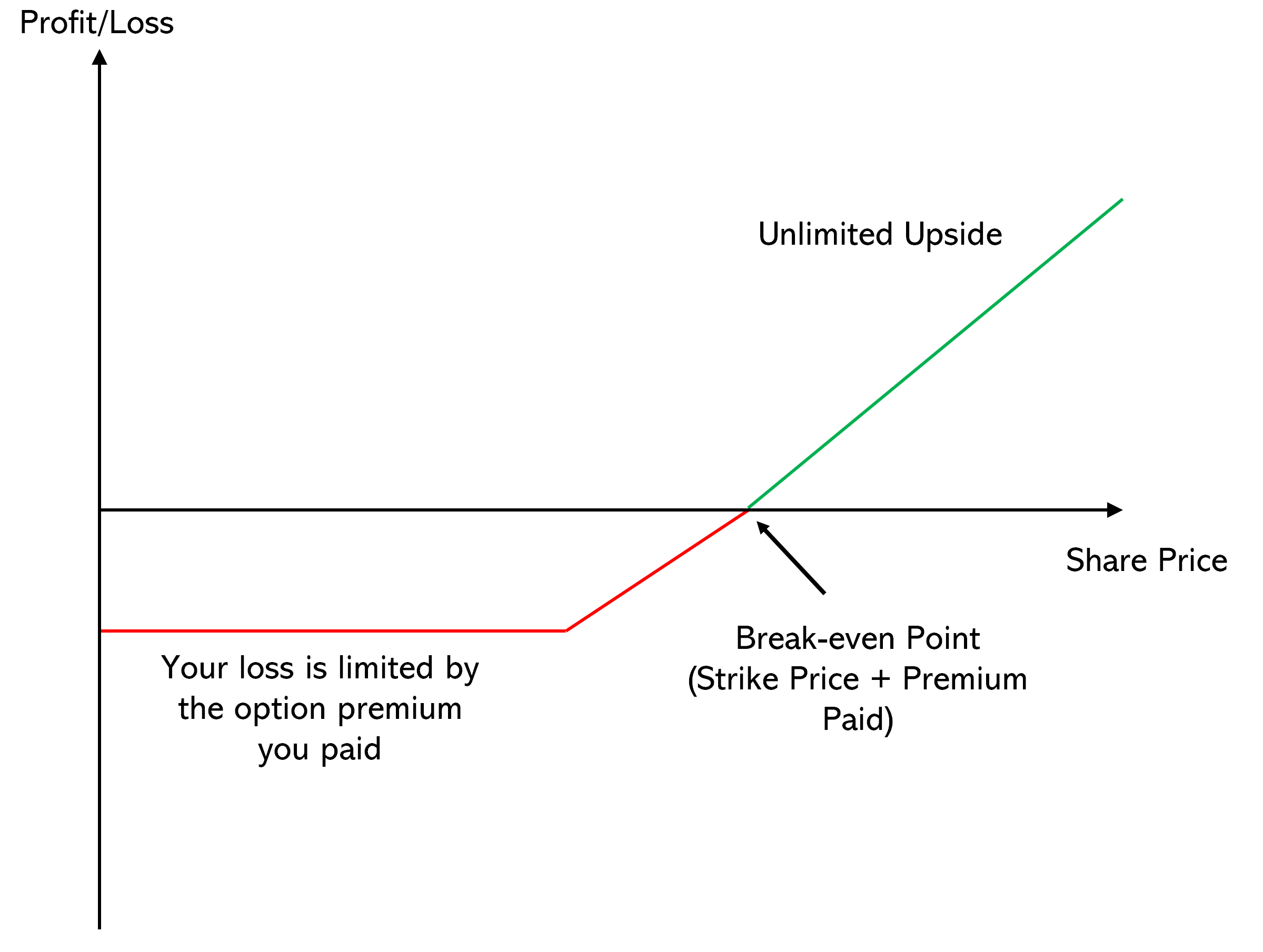
Can you see that when we buy a long call option - our risk is limited by the option premium that we paid for.
However, the upside of the call option is unlimited.
That is the beauty of call options.
However, it is also important to understand the risks of call option which will be discussed later.
For now, let's take a look at the risk profile graph of the other strategy - the sell put option.
Risk Profile Of Sell Put
To discuss the risk profile of sell put, let's do a recap of what selling put option means.
Selling a put option means that you promise to buy 100 shares of the underlying asset at the strike price.
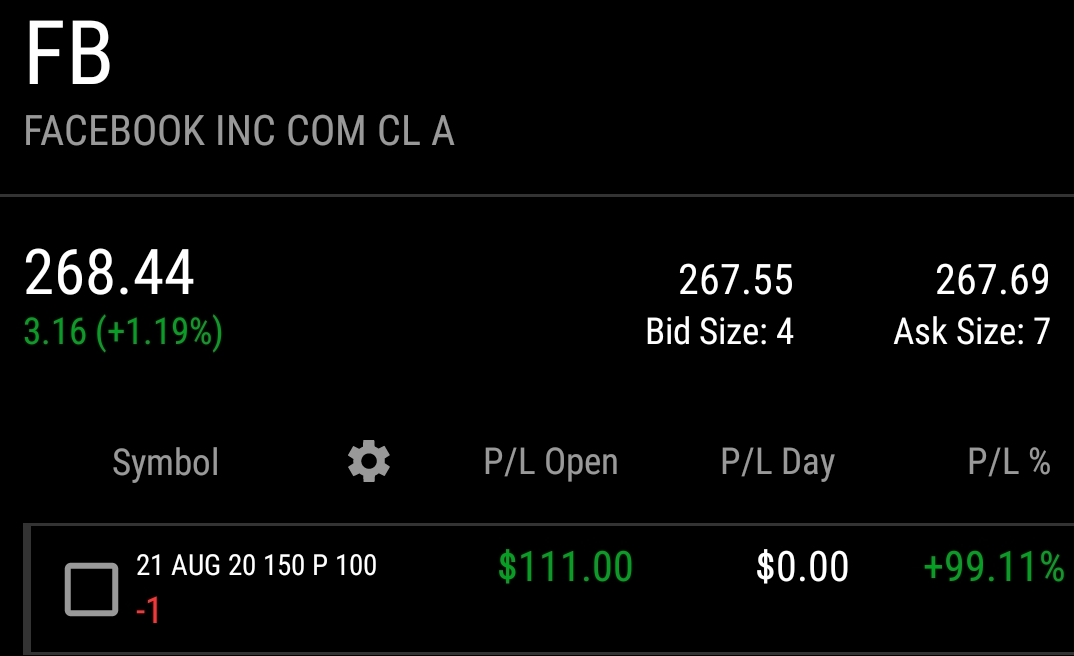
So if we were to sell a put option on Facebook with a strike price of $150 - then we are promising to buy $15,000 worth of shares.
However, remember when we sell a put option, we receive a premium in return - in this case, you can see that I received a premium of $111.
So what is my maximum risk then?
Well, it would be $15,000 - $111 = $14,889.
Remember that we are selling a put option.
In this case, we sold the put option and collected $111 - and this is our maximum profit.
So here's how the risk profit graph looks like.
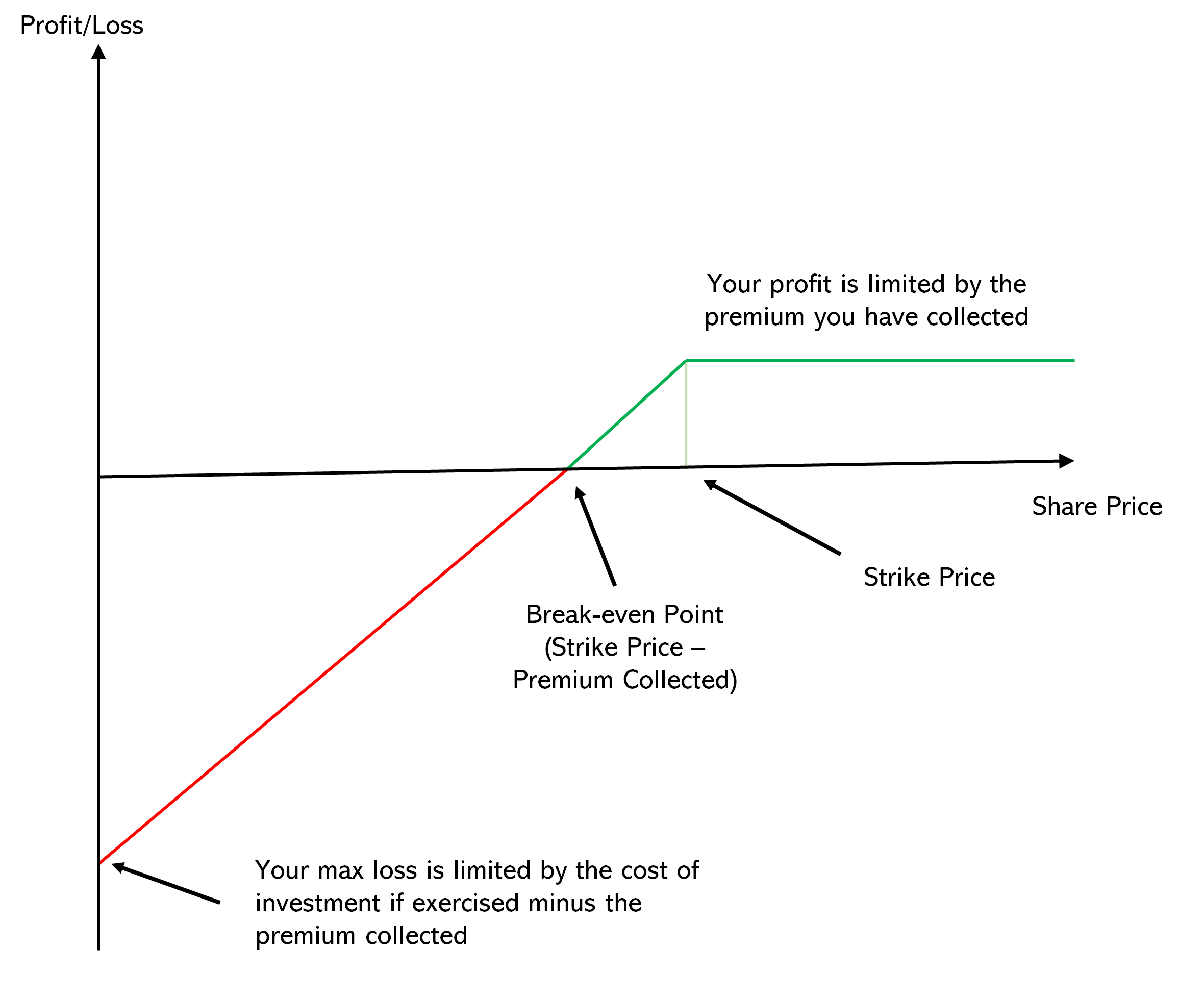
You might be thinking - why would I want to put on a trade that has limited upside and "unlimited" downside.
Well, the answer to that question is value investing.
We only sell put option on stocks that we want to own, at the prices we don't mind holding them at. Also, the put option when exercised, must not affect our portfolio diversification rules.
Sometimes, the stock may not be undervalued yet - and you want collect some premium by selling a put option at an undervalued strike price.
And even if it gets exercised - you will then buy 100 shares of the quality stock at an undervalued price.
And remember that, when it gets exercised, you unlocked your "gain" potential.
See graph below.
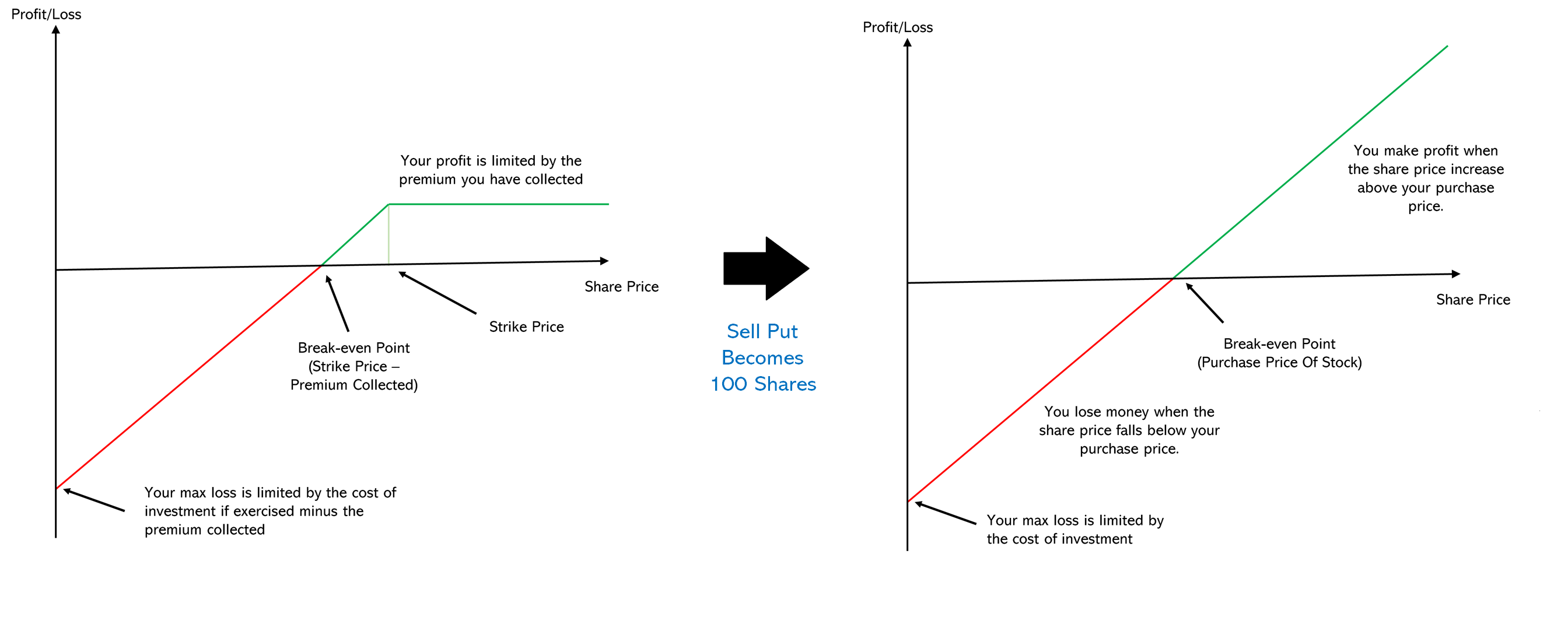
Risk Profile Graph Changed When Exercised (Click To Enlarge Image)
So you can see that, when a sell put option is exercised, not only do you get to own 100 shares of an undervalued quality stocks - you will also unlock the gain potential.
And on top of that, you collected option premium. A win-win strategy.
Quiz
Here's a quiz to test your understanding to make sure you understood the key concepts from this chapter.
What's Next?
We have now went through all the fundamentals of options - you should now know the basics of options.
After completing the quiz, its time to dive into the details of the two core strategies - the long call and the sell put strategy.
Note: One of the biggest reasons why the options hub was built as there were too many people who get burnt because of the lack of knowledge of how options works and its risks involved. This resource hub aims to equip beginner investors with the knowledge of options and how they can manage their risks when investing with options.



